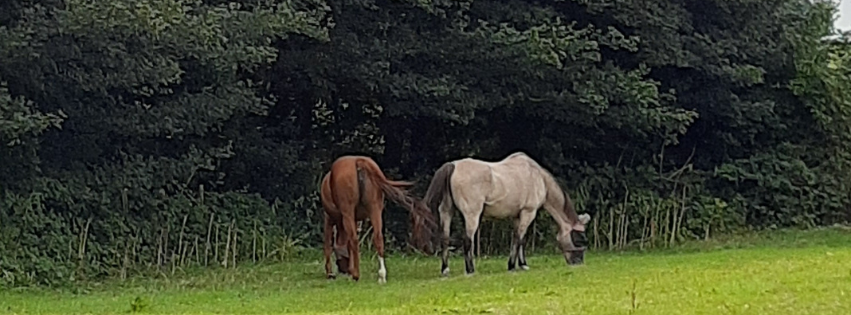Herbal Bone Support
With a bit of sunshine-sourced vitamin D3 thrown in as well
This week I’ve had a few enquiries come in regarding peripheral bone issues – we’ve had a client with splint issues, another with ringbone and yesterday a navicular question.
So how can botanicals support bone density? We’re lucky in that there’s an excellent selection of nutritive, mineral-dense herbs, i.e. nettle, oat straw, comfrey and dandelion, all rich in calcium, magnesium, and silica which is so important for bone strength, with nettles also being a collagen-building superstar.
These nutritive herbs may even be more useful than feeding isolated minerals because they provide their natural source of minerals in an alkalising, anti-inflammatory package.
We also know from research that multi-mineral supplements work better than isolated minerals (when you add extra of one, it creates imbalances of the others), and that plant-rich alkalising diets support stronger bone structure. We also know that bone demineralises when the body is in an inflamed state, at least in part because calcium is used to buffer inflammation-induced acidity.
Vitamin D3 is also hugely important, well, not just important - more like essential for a list as long as your arm for whole-body function as it affects virtually every cell, tissue and gene in the body. But again, it won't work in isolation - D3 needs vitamin K2 (in the perfect world, although K1 is a useful alternative)- one can’t work properly without the other.
Various vitamins and minerals work with calcium and vitamin D3 to further reduce breakdown and improve density and a stronger, flexible bone matrix more resistant to fracture. Vitamin K2 regulates bone density and reduces the risk of fractures, equalling conventional drugs’ efficacy but with much less toxicity (Iwamoto et al., 2003; Iwamoto et al., 2004; Schwalfenberg, 2017) - one of its biological roles is to move calcium out of the blood and into its appropriate areas of the body, such as bones and teeth.
Magnesium also plays an essential role in vitamin D metabolism due to its presence in several key enzymes, and silica improves bone matrix integrity so it’s stronger, denser, and less brittle.
Even better, the minerals in our favourite nutritive herbs are significantly bioavailable to the body. Vitamin D is easily created from exposure to sunshine with a high enough concentration of ultraviolet B (UVB) rays (the only type of wavelength that produce vitamin D), and nettles are rich in plant-source vitamin K(1).
Overall, protecting and rebuilding bone requires time and patience. As with most peripheral issues, it’s never a sprint to recovery but a slow, careful marathon - no pun intended (well, maybe just a bit!).










